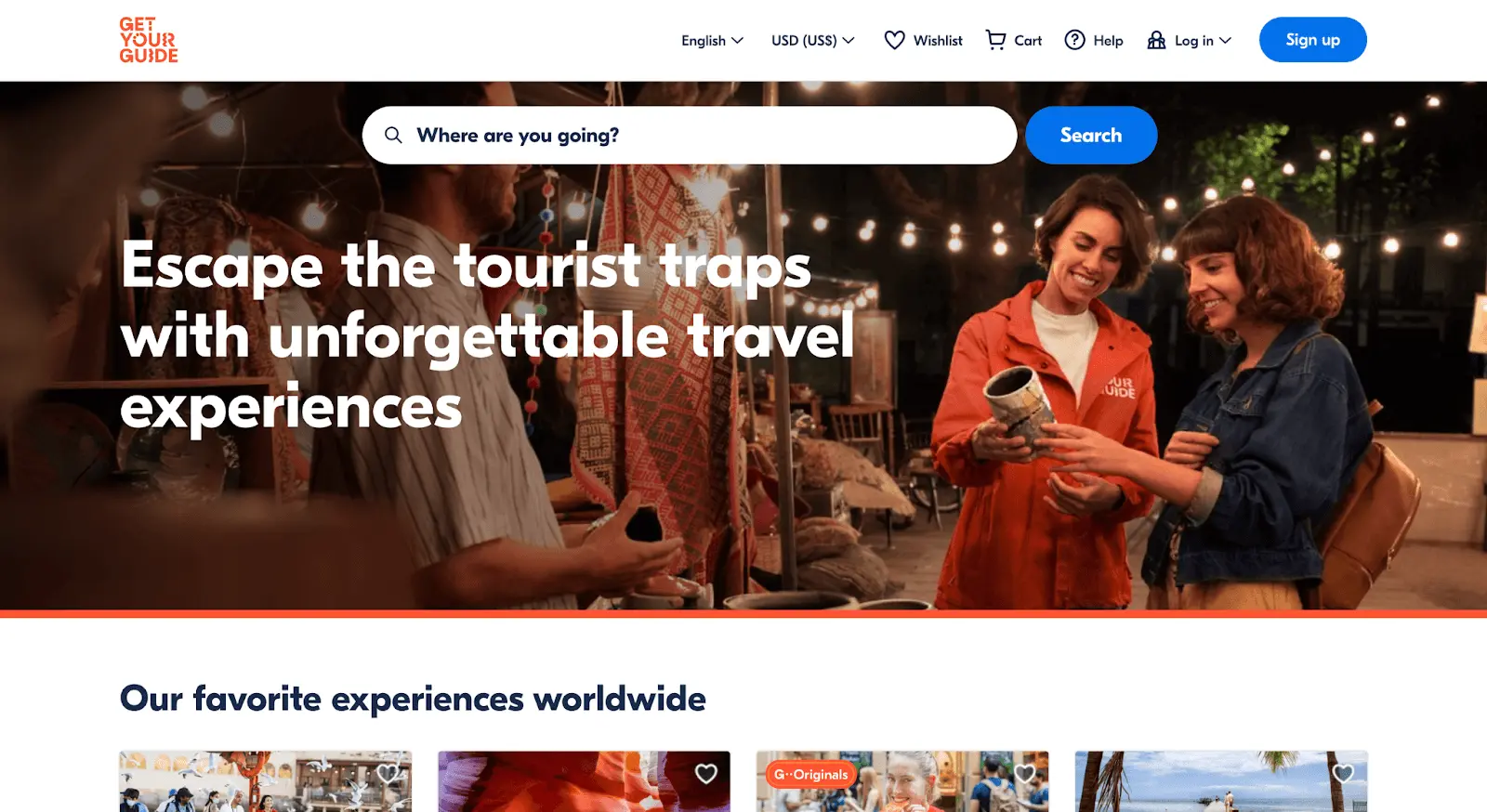
The success of your paid ad campaigns lies in the ability to measure and analyze relevant KPIs — like ad spend, ROI, and conversions.
In this post, we’ll dive into the nuances of Google Analytics 4’s evolved metric-tracking features so that operators can learn how to best use the new analytics platform to track their paid ads.
- Understanding the key differences between Universal Analytics and GA4 for paid ad tracking
- 7 paid ad metrics to track in GA4
- The simplest way to measure ad campaigns in GA4
- How to use GA4 to analyze ad traffic
- Additional ways to track ad campaigns
How to set up Google Analytics 4
The first order of business is to set up GA4 if you haven’t done so already.
If your website is new, the process is straightforward with Google’s Setup Assistant. You’ll create a new Google Analytics account, configure your data-sharing settings, and then create a GA4 property (or what Google calls your website, mobile application, or blog.)
Google will then track your website analytics through a unique tracking ID.
Pro Tip: You can find specific step-by-step instructions here.
For sites that are already on Universal Analytics, we recommend setting up a new property for GA4, using the same process. This will run in tandem with your existing Universal Analytics setup.
In your Google Analytics account, go to “Admin,” and click “Create a property.” Name your new property, and follow these steps to set up GA4 for that property.
Once you have finished the setup process, Google will start collecting data from that point forward. Note that it’s not possible to backfill historical data from prior days, weeks, or months into this new property. You’ll need to rely on your previous Universal Analytics property for that historical data.
Understanding the key differences between Universal Analytics and GA4 for paid ad tracking
Universal Analytics was a great source for user behavior, telling you who visited your website, when they visited, and where they were located.
GA4 can track the “what,” “how” and “why” of how people interact with your website. This is because GA4 benefits from machine learning, which allows it to foresee the future actions of a customer.
Previously with Universal Analytics, user interactions were tracked via page views and sessions. In GA4, each interaction is classified as an “event,” which you can then further analyze in a more flexible way. These events are tracked independently of page views and sessions and can be turned on or off as needed.
When it comes to using Google Ads, GA4 lets you identify highly engaged or high-value audiences and target them with a paid campaign. GA4 also makes it possible to learn what people do after clicking your ads, providing a more in-depth look at customer behavior.
7 paid ad metrics to track in GA4
GA4 automatically tracks the following metrics tied to paid ad campaigns:
- Conversions: The number of times users triggered a conversion event. To best track this, you’ll need to define what user interaction is classified as a conversion for that particular campaign.
- Engaged sessions: The number of sessions that lasted 10 seconds or longer, had one or more conversion events, or two or more page or screen views.
- Google Ads clicks: The total number of times users clicked on your ad.
- Google Ads cost: The total amount you paid for your campaign through the Google Ads platform.
- Google Ads cost per click: The average cost you paid per click for your advertising campaign.
- Purchases: When users complete a transaction on your website or app.
- Conversion rate: The percentage of users who completed a desired action after clicking on your ads.
Setting up goals and conversions for ad campaigns
Conversions were previously known as “goals” in previous versions of Google Analytics. Now, the most important customer interactions are called “conversions.”
To configure your conversions, you must first instruct GA4 on what events are considered meaningful conversions for your business. An event can be a purchase, a newsletter sign-up, a page view, an ad click, etc.
To do this, go to the Admin tab, then select the property you’re tracking (a.k.a. your website). Now, click on events and switch the toggle next to each that’s important for your business.
Source: Dag Marketing
Google automatically tracks the number of events happening on your website, but if you want to track events for a specific campaign, you need to define something called a “parameter.” A parameter is a piece of additional information that adds further context to an event, which we’ll explore further in the next section.
The simplest way to measure ad campaigns in GA4
In GA4, you can access the “Explore” section to create a customized Google Ads report. The report will give you valuable insight into your Google Ads campaigns, including traffic and conversions.
However, to track conversions for a specific campaign — such as how many people visited your tour pages after seeing an ad for your business on Google — you’ll need to break your goals into specific parameters.
The easiest way to do this is through UTM (Urchin Tracking Module) codes. This is a simple code that can be attached to any URL to help track the progress of a paid ad campaign. UTM codes can be used to create a unique URL for each campaign, allowing Google Analytics to precisely trace conversions back to their original source.
UTM codes can contain up to five parameters:
- Campaign: Tracks all the content from one campaign.
- Source: Which website the traffic is coming from.
- Medium: Which general channel the traffic came from, like email or social media.
- Content: What type of content people clicked on, such as an image or a sidebar link.
- Term: Which terms, or keywords, are driving traffic to a specific page. This helps identify the keywords you’ve paid for in your Google Ads campaign.
You can explore a free UTM code tool here.
How to use GA4 to analyze ad traffic
Source: Adsmurai
GA4 provides a variety of reports that give you meaningful insights into your ad campaigns. These reports are automatically generated for you and can be used to better understand how your audience is interacting with your ads. Among those reports, these may be the most relevant for a paid Google ad:
- Overview Report: This report provides you with a high-level summary of your website’s performance. You’ll find details on user metrics — like active users, engagement, and acquisition channels — as well as conversions and revenue. These metrics help you quickly assess the overall performance of your marketing strategy.
- User Acquisition Report: The user acquisition report outlines the sources and methods of bringing traffic to your website. You’ll be able to view key metrics like sessions, new users, bounce rate, and average session duration for each acquisition channel, including paid ads.
- Audience Reports: In GA4, you have access to audience reports that offer a glimpse into your audience’s demographic details, interests, and device choices. Leveraging this data can help you improve the delivery and content of your paid ads, ensuring they reach the right people at the right time.
- Conversion Paths: With this report, you’ll be able to view the customer journey, including the different touch points and marketing channels they interacted with before converting. You can use this report to identify channels that are converting well vs. those that aren’t.
- Conversion Report: A valuable tool for monitoring and assessing the custom goals and events that you’ve set up for your campaign. You can use this report to measure how effectively your ads are accomplishing particular goals, as well as pinpoint areas for improvement.
Source: Adsmurai
Additional ways to track ad campaigns
There are four types of events you can set up and track on GA4:
- Automatically collected events
- Enhanced Measurement events
- Recommended events
- Custom events
Adding the Google Analytics 4 tag to your website will automatically track several user interactions for you and categorize them as events. GA4 tracks every time a user starts a new session on your website, for example. These metrics will always be available to you no matter what — you can’t turn them off.
Enhanced measurement events, on the other hand, can be toggled on or off. This is a GA4 feature that lets you track optional events like “scrolls for people scrolling at least 90% of a page” and “outbound clicks from your website to other websites.”
Google also has a list of recommended events to help you pick and choose the events your business should be tracking. Finally, you can also create custom events. To implement either, you’ll likely need to use Google Tag Manager to create an event tag, although you can create some custom events through the GA4 platform.
How to set up event tracking for ad campaigns
There are two ways to create custom events in GA4: Using Google Tag Manager, which is a manual process that you can go through in the Tags Tab, or by using the Analytics Admin Panel via the User Interface.
Using Google Tag Manager:
1. To create a custom event in GA4, you’ll need to set up a new tag in Google Tag Manager. Give your tag a descriptive name based on the campaign you’re tracking, such as “Campaign X Button Click.” Then, configure the tag settings.
2. Choose the Google Analytics GA4 Event Tag, and specify the measurement ID along with the event name. Define additional event parameters and other settings as needed.
3. Next, establish a trigger for the specific button you want to track. You’ll need to give the trigger a descriptive name, such as “Campaign X Button” and specify the button type and URL you want to monitor.
4. Before finalizing the tag, preview it to confirm that everything is working properly. If everything is OK, publish it.
Using the User Interface:
1. Click Configure, and Go to “Events.” You’ll see the Custom Events screen, where all existing events will show up.
2. Click “Create Event.” Give the event a name (use only letters, underscores, and numbers). Next, set the event’s matching conditions, or specify the actions that will trigger the event as soon as they take place. Lastly, set your event parameters.
3. Then click “Create.” Check to see if your new event is firing as it should: Set off the trigger yourself and see if it pops up on your Realtime Reports, or wait for website visitors to trigger the Event.
Creating Custom Reports for Ad Insights
With GA4, you can tailor reports to align with your campaign needs. Let’s see how you can create a custom report from scratch:
1. Identify the relevant metrics for your ad campaign. Check to see if the standard reports available already don’t track those metrics. If the standard reports fall short, you can start creating your own.
2. Go to the “Reports” tab. Then, click “Library” and “Create a New Report.” Now, give your new report a name and select its type.
3. Define the metrics and dimensions necessary for your report. Further customize the report by exploring the options under “Create Overview Report” or “Create Detail Report.”
4. Save it. Then seamlessly integrate it into your GA4 navigation menu for easy access.
Building an ad dashboard in Looker Studio (Google Data Studio)
Looker Studio, formerly Google Data Studio, is an online tool that converts data into customizable reports and dashboards.
Let’s take a look at how you might create a Google Ads dashboard using the platform.
1. Navigate to Google Data Studio and create a blank report.
2. Next, create a new data source and select Google Ads. Choose the account you want to connect to, authorize it, and add it to the report.
3. Now we can start building your Google Ads dashboard. First, clear the current page of any tables that were automatically created. Then add a new scorecard chart by clicking “Add a chart” and “Scorecard.”
4. Select the scorecard and go over to the “Data” tab on the right side of the screen. Under metrics, search for the figure you’d like to display, such as “clicks” or “conversions.” You can easily compare your figures against a previous date range by changing the comparison date range.
5. You can also style your scorecards by adding a border shadow, changing the background color, etc. Once you’re done, you can copy and paste the scorecard as many times as you’d like — and change each metric to your desired KPIs.
6. To look at data for a particular campaign, you’d add a date range and campaign filter. To do this, choose a new date range filter from the top menu bar. You can change the date range under the data tab on the right. Then, add a campaign filter and narrow it down to ad groups, devices, or any other segment you want to track.





